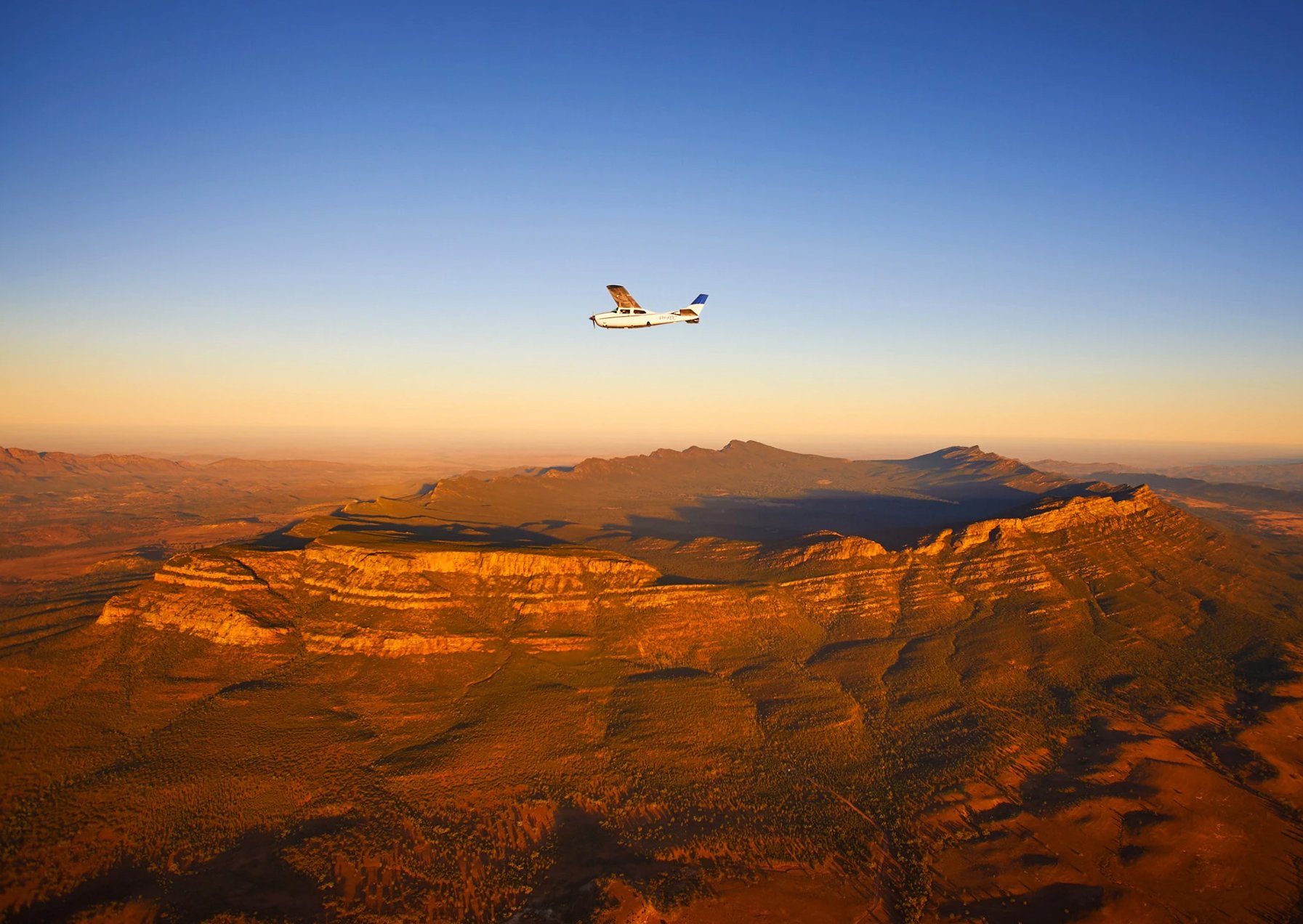Ikara Flinders Ranges
Exploring Wilpena Pound from all angles
The Flinders Ranges, as they are today, are the mere stubs of once majestic mountains, which hundreds of millions of years ago would have rivalled the Andes or the Himalayas.
The original sediments were laid down over half a billion years ago before uplift, folding and faulting formed a massive mountainous range, followed by the weathering that has left us with the current landform – a mix of sandstone and quartzite geological features. Within the great Flinders Ranges today, the most iconic and spectacular geological formation is Wilpena Pound. Known as Ikara by the Traditional Owners, the Adnyamathanha people, Ikara means “meeting place” and refers to the area within the Pound that was a sacred place where meetings and ceremony occurred.
The Flinders Ranges is not a single range but is instead a complex of short outcropping ranges that run in all directions, with many of them individually named. The Arkaba, Elder, Heysen and the ABC Ranges are just a few of the local ranges that are so named. The Ranges are part of the Adelaide Geosyncline, and the extraordinary Wilpena Pound is classed as a synclinal basin. The “Pound” gets its name from the English word that refers to an enclosed area that was often used to impound or contain stock. The geological feature is just that – an area bounded on all sides by steep slopes that required minimal fencing to keep stock in.
However, the expanse of Wilpena Pound cannot really be envisaged without an aerial view. Google Earth provides an easy way to do that but to see it in person requires a very steep and arduous climb to the highest peak on its rim – St Mary’s Peak (1170mASL). Similarly to Uluru, a climb to the top of St Mary’s Peak is not encouraged due to it being a place sacred to the Adnyamathanha. And even if you were to get to the top of this or one of the other surrounding peaks, the true dimensions and geomorphology of the area cannot be fully appreciated with your feet still on the ground.
The only way to wholly understand and experience the majesty of the region is to take to the air and join a scenic flight over the Pound and the surrounding area. This is a truly spectacular outing and the best way to appreciate the area following a visit on the ground.
The flight takes off from east of the Pound before traversing it with the nearby ranges clearly laid out and the adjoining gorges apparent in this ruggedly beautiful landscape. The panoramic views from the air showcase the Pound's vastness (almost 8,000 hectares) while revealing its circular natural amphitheatre, and the play of light and shadow accentuates the textures and contours of the landscape. The pilot's insightful commentary provides context and narratives from above, transforming the scenic journey into an educational expedition that enriches your understanding of the region's rich geological heritage.
As part of the upcoming “The Flinders Ranges” tour this March, our visit to the Ikara-Flinders Ranges National Park has us staying at the resort within the Park. The resort is located outside the eastern rim of the Pound and a walk of about one hour takes us into the Pound itself, where a short climb enables us to enjoy a view across the treetops that cover the base of this unique geographical feature.
Our visit involves short drives around the southern, eastern and northern limits of the Pound to see some of the adjacent gorges – the anticlines that oppose the geosynclines – all similar but all so very different! And the highlight of our stay will be taking this special scenic flight over the Ranges and Pound – providing an unforgettable experience of our extraordinary outback.
We finish our stay with a sunset view across the east of the Pound from one of the hilltops, enjoying bubbles and nibbles of course! This allows us to witness the sun setting behind the Heysen Range, highlighting its eastern rim and northern and southern limits. The experience emphasises the vastness of the ranges and demonstrates how little of them you see when visiting the park and remaining on the ground.
A meeting place for thousands of years, Ikara’s natural beauty, spiritual significance, and diverse range of flora and fauna await.
Explore Flinders Ranges this March
From the historic beachside suburb of Glenelg in Adelaide to the expanses of the Outback, this adventurous small group tour led by archaeologist Dr Chris Carter bears witness to the region’s iconic landscapes, history and heritage.
A new offering this year is our stay at Prairie Outback Lodge at Parachilna, our base to explore the fabulous new fossil site of Ediacara (pictured below) only recently opened to the public.









